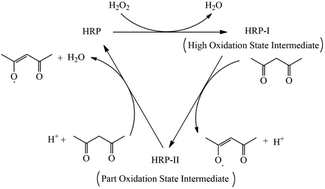Effect of molecular flexibility on the rheological and filtration properties of synthetic polymers used as fluid loss additives in water-based drilling fluid
Abstract
The effect of molecular flexibility on the rheological and filtration properties of synthetic polymers used as fluid loss additives in water-based drilling fluid was investigated. A new synthetic polymer (PAANS) comprising acrylamide (AM), 2-acrylamido-2-methyl-1-propane sulfonic acid (AMPS), N-vinyl-2-pyrrolidone (NVP) and potassium 2,5-dihydroxybenzenesulfonate (DHBS) was synthesized, in which phenyl groups were introduced in the backbone. Two other comparative polymers, PAAN and PAANS, were also prepared following the same synthesis procedure. PAAN comprises AM, AMPS and NVP, while PAANS consists of AM, AMPS, NVP and sodium 4-styrenesulfonate (SSS). PAAN, PAAND and PAANS were characterized by 1H NMR and elemental analysis, and the molecular weight was determined by static light scattering (SLS). The rheological properties, filtration properties and performance sustainability were investigated. Using a rheological properties measurement test, the apparent viscosity (AV), plastic viscosity (PV) and yield point (YP) of the Na-MMT/PAAND system at a concentration of 2.0% were 18.0 mP s, 12.0 mP s and 6.0 Pa, respectively, after a thermal aging test at 240 °C for 16 h. These values are much higher than those of the corresponding Na-MMT/PAAN and Na-MMT/PAANS systems. The API filtration loss volume (FLAPI) and high-temperature/high-pressure filtrate volume (FLHTHP) of the Na-MMT/PAAND system at a concentration of 2.0% were 12.0 mL and 30.0 mL, respectively, after a thermal aging test at 240 °C for 16 h. These values are much lower than those of the Na-MMT/PAAN and Na-MMT/PAANS systems. Compared with PAAN and PAANS, PAAND presents the best performance sustainability after multiple shearing and thermal aging tests. At the same temperature, the order of maintaining rheological performance and controlling the FLAPI and FLHTHP was PAAND > PAANS > PAAN in Na-MMT/PAANS-based drilling fluid at high temperature. Increasing the percentage of rigid monomers in the backbone was found to be conducive to maintaining the rheological stability and improving the filtration properties at high temperature. The control mechanism of fluid loss was investigated through adsorption tests using the method of thermal filtration, assessing particle size distribution on a laser diffraction particle size analyzer (LPSA) and examining filter cake morphologies using an environmental scanning electron microscope (ESEM). The results reveal that the introduction of rigid monomers into the synthetic polymer backbone can effectively improve the adsorption capacity of the polymer on the clay surface, obstruct the aggregation of clay particles, and improve the quality of filter cakes at high temperatures.



 Please wait while we load your content...
Please wait while we load your content...